Welcome to Winter!
Hang on, isn’t it almost Summer?!
Someone clearly forgot to tell the weather that!
We bought more wood for the fire last weekend. Just a small amount because “surely this cold snap can’t last more than a couple of days?!”
But it looks like we might need some more this weekend! Who’d have thought?!
With all the carry-on at the Cellar Bar of late – new wines arriving and old vintages running out, I’ve neglected to update you with what’s happening out amongst the vines.
So, it’s probably time to take another visit.
Let’s have a look at what effect this cold weather is having on our 2021 growing season…
Cold weather and plants
It’s probably not much of a secret that plants don’t do a heck of a lot when it’s cold. In winter, vines (and other plants) shut down and wait it out till the sun comes back.
And this is also what happens when the cold weather makes a surprise appearance… in November!
According to last week’s CropWatch report (so, even before this latest cold snap), Chardonnay at Macclesfield is currently two weeks behind compared to 2019 and 2020 and one week behind 2018. My educated guess is that this gap is going to be even wider this week.
The other problem with the up and downess (it’s a word, ok??!) of the temperatures this growing season is that vine growth has been inconsistent. CropWatch reported that in one variety in one vineyard (chardonnay at Macclesfield), the visible E-L stages ranged from E-L 16 – 20.
From a crop and disease management perspective, this is not a good thing. Ideally, each variety will be developing at the same rate so you can time sprays and other vineyard management operations effectively.
The other potential problem is going to pop up at the pointy end of the growing season.
Grapes on vines developing at different rates aren’t necessarily going to ripen at the same time. And if you’re looking for a particular ripeness in the juice coming from those grapes, things start to get a little problematic.
But, I’m getting ahead of myself.
Adelaide Hills – growing season 2021
Least advanced
Lenswood Sauvignon Blanc
E-L 16 (10 leaves separated)
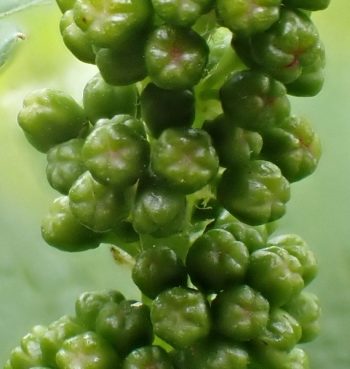
Most advanced
Chardonnay at Macclesfield.
E-L 18 (14 leaves separated: flower caps still in place, but cap colour fading from green) – this is an average due to the range of stages seen in the crop.
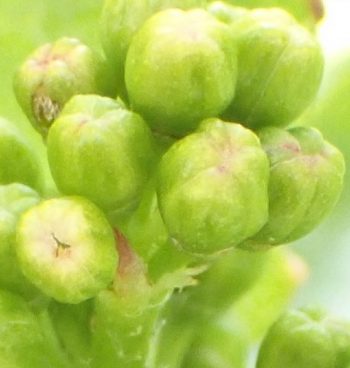
(reported in CropWatch – November 12, 2021)
Remind yourself about E-L stages here.
I haven’t been able to get up close and personal with any vines this week, but I’d say the most advanced vines will be flowering. Which, in itself is exciting… it’s a very important stage.
But that large range of growth stages will mean staggered flowering (and fruitset), which is not ideal.
Loving our blog? Sign up for weekly updates straight to your inbox…
A more imminent threat…
CropWatch released a “Downy Mildew Infection Warning” Tuesday afternoon.
We’ve talked about Downy Mildew before, so you can get heaps more information in this post over here.
But, just quickly…
Downy Mildew is a pain the backside disease. Once you have it in your crop you pretty much have it for life. The key to keeping it under control is to keep an eye on the weather.
The weather conditions conducive to an infection period for downy mildew are…
At least 10 mm rainfall over a 24-hour period during which the temperature does not go below 10 degrees Celsius (commonly referred to as “10:10:24”).
In these conditions, dormant downy mildew spores erupt from the soil and “splash” (or mist) onto the canopy of the vines. And when I say “dormant”, they can happily live in the soil for up to 10 years!
This process is the “primary infection” – the spores have now infected the leaves along with the developing flowers/bunches.
Along with the cold weather, we’ve also had rain.
And we’ve had three separate occasions in the last few weeks which have been conducive to a primary infection (that 10:10:24 thing I mentioned before). They were…
- 28th October
- 11th November
- 13th November
Earlier this week, CropWatch was advised of several incidences of the development of soil spots (the first sign of a downy mildew infection, see image) and one instance of a primary infection, all located in the central area of the Adelaide Hills region.
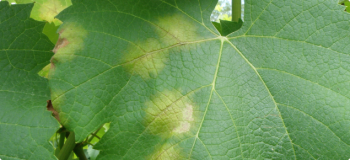
Bunches just prior to, and during flowering, are particularly vulnerable when downy mildew infection periods occur.
So, this probably couldn’t have happened at a worse time.
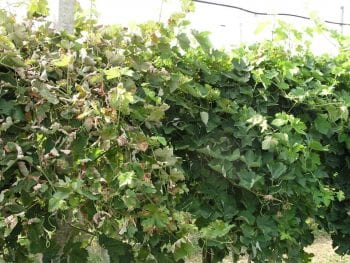
The only way to stop downy mildew from damaging the crop is to apply fungicides. The image on the right shows what strategic use of fungicides can achieve. The section on the left is an untreated downy mildew infection, while the section on the right has been sprayed.
Grape growers will now need to be hyper-vigilant when it comes to monitoring their vineyard and keeping on top of their spray program.
And when I say “monitoring”, there is a nifty little test growers can do to keep one step ahead of any potential downy mildew outbreaks.
It’s (glamourously) called a…
Bag test
The Bag test involves placing suspect leaves into a plastic bag together with two drops of water.
The bag is then sealed to maximise humidity and placed in a warm drawer overnight.
This test simulates optimal conditions for a downy mildew secondary infection – humidity, a little free moisture, warmth and darkness.
By morning sporulation should begin to occur on the underside of the leaves leaving a downy growth on the areas where yellowing has occurred.
The same test may also be applied to old downy mildew spots as it provides assurance that any treatments applied have completely killed any fungal development.
Fingers crossed, growers throughout the region can get on top of any issues early.
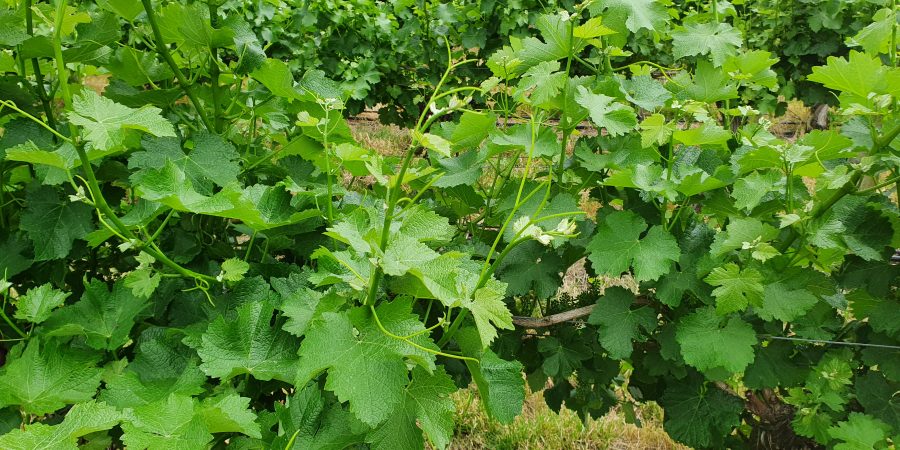
Wow! Another fantastic lesson. Even at my age there is still room for additional information. Thanks again.
My pleasure Graham! I’m glad you’re getting something out of it 🙂